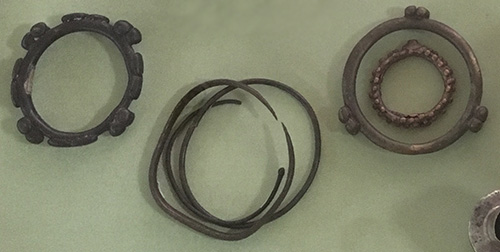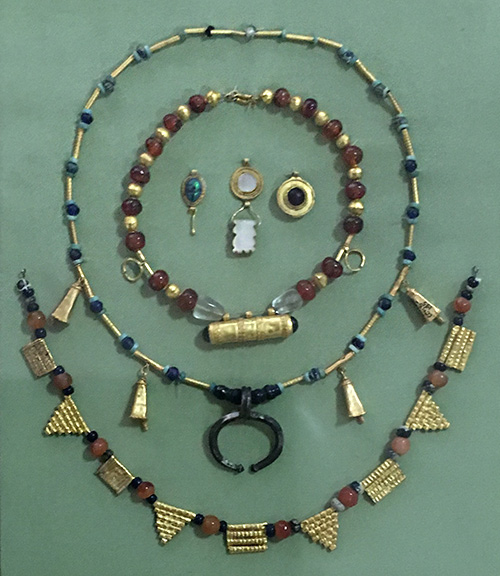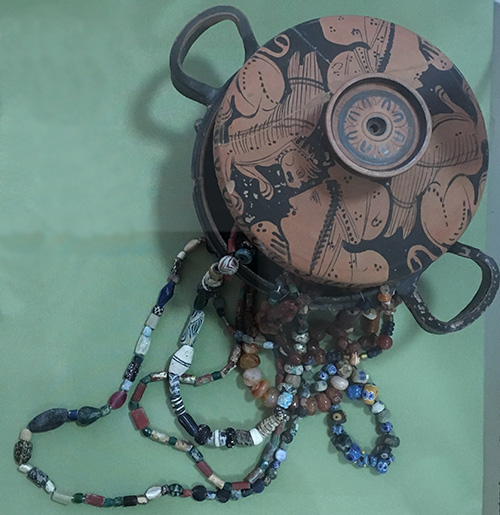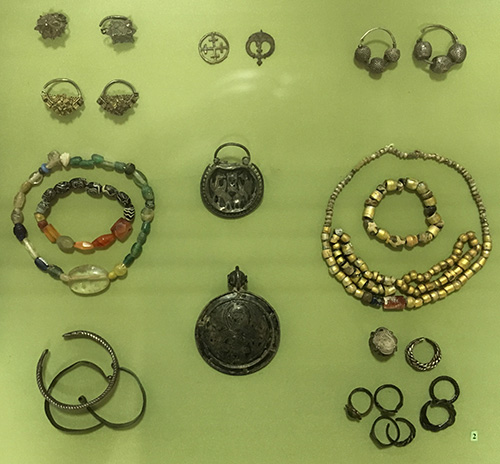 Jewelry pieces have been the favorite human accessories for millennia. At first, people made jewels from bones, shells, teeth, stones, wood, and other natural materials that surrounded them. Later, they learned how to make adornments from metal and glass. Jewelry techniques changed, human tastes changed, the value of precious metals and stones changed with time, but we still love and wear beautiful jewels in the 21st century. So, do you know how the first jewelry items looked like? And how they altered throughout millennia? We’ve prepared a few photos for you.
Jewelry pieces have been the favorite human accessories for millennia. At first, people made jewels from bones, shells, teeth, stones, wood, and other natural materials that surrounded them. Later, they learned how to make adornments from metal and glass. Jewelry techniques changed, human tastes changed, the value of precious metals and stones changed with time, but we still love and wear beautiful jewels in the 21st century. So, do you know how the first jewelry items looked like? And how they altered throughout millennia? We’ve prepared a few photos for you.
Read also: Traditional jewelry pieces of Kyivan Rus (+ photos of real silver jewels of the epoch)
Jewelry pieces in Ancient Greece. Samples of 3,000-year-old gold jewels
Ukrainian dukach – traditional jewelry piece made from coins and adorned with gems
The pieces displayed here are museum exhibits. They are archaeological finds from the territory of modern Ukraine. For thousands of years, people have been living on this territory and they left behinds plenty of artifacts, including various jewels. So, let’s see some of them.
Different jewelry items from the Cucuteni-Trypillia culture (late 4th – early 3rd millennia B.C.), the Bronze Age (late 3rd – 2nd millennia B.C.), and the Scythian-Sarmatian Age (late 6th – early 4th century B.C.). These are necklaces, bracelets, earrings, hairpins, pendants, etc. made from various materials, including bones, shells, bronze, glass, gold, and gems

This necklace is among the oldest jewelry pieces in the world. It dates the late 4,000 – early 3,000 B.C. It is a part of the Cucuteni-Trypillia culture. It is made from animal teeth, bones, and shells. It may look simple but just imagine that this neckpiece is at least 5,000 years old

Pretty necklaces from the Scythian-Sarmatian Age (late 6th – early 4th century B.C.). They are made from stone and glass beads and gold elements

Bronze bracelets from the Scythian period. These pieces are rather simple but they have a certain charm

Gorgeous ancient jewelry (4th century B.C. – 4th century A.D.). These necklaces and pendants are much more skillfully made and delicate. A lot of gold is used to make them and also stone and glass beads

Gold and silver earrings from the Age of Antiquity (4th century B.C. – 4th century A.D.). These are sophisticated pieces, they are made from gold and silver and embellished with precious stones

Striking stone and glass beaded necklaces from the Age of Antiquity (4th century B.C. – 4th century A.D.). The beads are so different from one another – their color, shape, size, pattern, etc


Beautiful gold and silver jewels from the Migration Period (6th-7th century A.D.). They are several pairs of gold earrings, 2 magnificent radiate-headed fibulae (brooches), a pair of silver bracelets, and 2 silver buckles

Various jewels from the Kyivan Rus’ period (9th – early 13th century). They are made from silver, bronze, glass, and stones. You can see 3 pairs of temple rings, a single silver temple ring with blackening (another matching piece is lost), a few pendants, a set consisting of a necklace and a bracelet made from glass beads, 2 bracelets made from glass and stone beads, 3 metal bracelets, and a bunch of finger rings

These are examples of another popular jewelry in the Kyivan Rus’ period (9th – early 13th century) – glass bracelets. Unfortunately, they are broken, but you can see the patterns on glass

Silver torques called “grivna” from the Kyivan Rus’ period (9th – early 13th century). These neckpieces were worn by men and often indicated the status and wealth of the wearer




